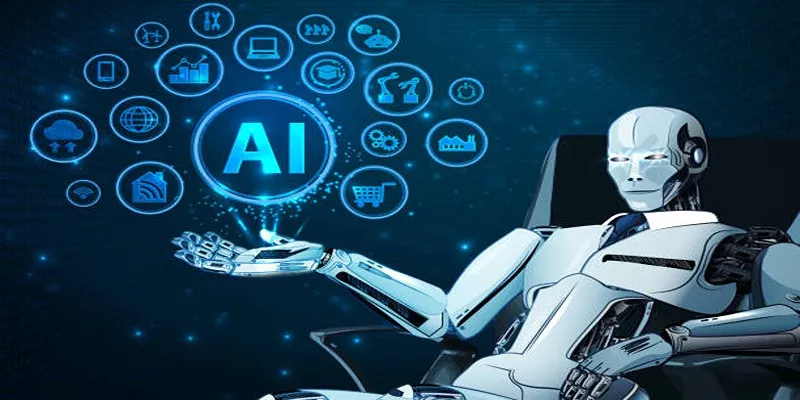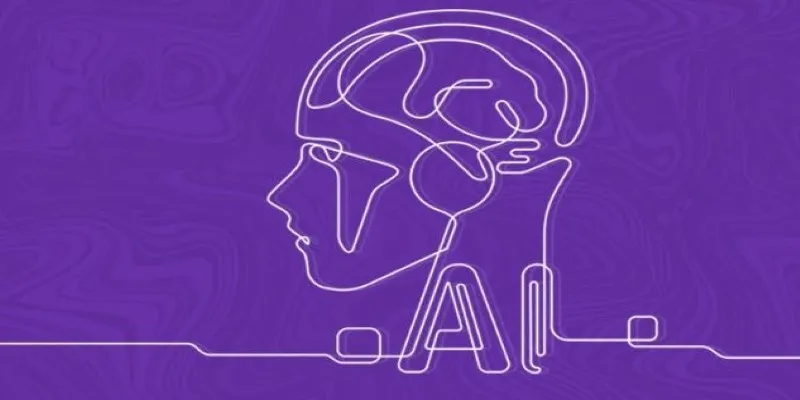The desire to know drives innovation, especially in artificial intelligence, where narrow systems perform limited tasks and broad systems aim for human- level intelligence. By exploring imaginative solutions and leveraging the best features of both paradigms, we can bridge these systems effectively. Developing curious approaches unlocks new potential, solving complex problems and establishing AI in diverse practical applications.
Narrow AI vs. Broad AI: Key Differences
To understand the role of curiosity in AI, it’s important to first differentiate between narrow AI and broad AI :
- Narrow AI is designed to perform specific tasks with precision. Examples include facial recognition, product recommendations, and medical diagnoses. These systems excel within their defined domains but cannot function beyond their intended purpose.
- Broad AI , also known as artificial general intelligence, refers to systems capable of performing any intellectual task a human can. These models can adapt to various tasks without the need for retraining or reprogramming.
The Role of Curiosity in AI Systems

Curiosity is a fundamental trait of human intelligence and plays a crucial role in developing AI systems. Many researchers believe it is essential for creating truly intelligent machines.
A major challenge in designing AI systems is enabling them to learn independently without explicit instructions or supervision. This is where curiosity becomes invaluable. By building curious artificial agents, we empower them to explore their environment and learn new tasks autonomously.
Moreover, curiosity allows AI systems to adapt and improve over time by seeking new challenges and experiences. It drives the discovery of new solutions and strategies for problem-solving, akin to how humans explore and learn. Curiosity is also the driving force behind technological innovation and progress, pushing AI researchers and developers to continuously improve and expand the boundaries of possibility.
How Curiosity Drives Broader Learning in AI
Creating truly adaptive AI systems requires the ability to generalize across diverse tasks. Curiosity plays a crucial role in achieving this by fostering exploration, adaptability, and deeper learning. Here’s how it works:
Fostering Exploration in Dynamic Environments
Curiosity-driven algorithms thrive in open-ended simulations or unstructured environments. Unlike rigid, hard-coded instructions, these models seek out areas of uncertainty or novelty, reducing ambiguity through trial and error.
For instance, robotic systems powered by curiosity have demonstrated improved navigation and manipulation skills by actively exploring uncharted areas in their operational settings. This exploratory behavior leads to more efficient and innovative problem-solving strategies.
Boosting Transfer Learning
Transfer learning enables AI models to apply knowledge from one task to another. Curiosity enhances this process by encouraging learning that extends beyond task-specific cues. By exploring for the sake of learning itself, models gather a diverse range of data, making them more adaptable across different domains.
This capability is especially valuable in applications like autonomous vehicles, virtual assistants, and smart manufacturing systems, where unforeseen changes in tasks or environments demand swift and effective adaptation.
Enhancing Reinforcement Learning
In reinforcement learning, agents typically learn through external rewards and penalties. Curiosity introduces intrinsic rewards for exploration, motivating systems to seek new experiences independently of immediate performance outcomes. This approach accelerates learning in sparse-reward environments and encourages the development of behaviors that extend beyond narrowly defined goals, broadening the AI’s overall intelligence and versatility.
Applications of Curiosity-Driven AI
Integrating curiosity into AI models is already delivering measurable benefits across a range of industries. Here’s how curiosity-driven AI is transforming key sectors:
AI in Robotics
Curiosity-based algorithms empower robots to acquire new skills without explicit programming. For example, warehouse robots can autonomously discover more efficient navigation routes or refine their grasping techniques through exploration, rather than simply repeating successful tasks.
Educational Technology
Adaptive learning platforms are leveraging curiosity-driven models to recommend content that challenges students at just the right level. By focusing on areas with the greatest potential for learning, these systems foster engagement and personalized growth, moving beyond rigid, standardized progressions.
Healthcare Diagnostics
In medical imaging and diagnostics, curiosity-driven AI explores unusual data patterns that might fall outside its original training set. This approach enables the detection of rare conditions or anomalies that traditional systems could easily miss, improving both accuracy and patient outcomes.
Game Development and Simulation
In complex, open-world games, AI agents enhanced with curiosity perform with greater dynamism and adaptability. By engaging in exploratory behaviors, they create richer, more unpredictable gameplay, leading to deeper and more immersive user experiences.
Challenges of Implementing Curiosity in AI
While curiosity holds great promise for advancing AI, it also presents notable challenges:
Measuring Intrinsic Motivation
Unlike external rewards, intrinsic motivation—such as the drive to explore novelty or uncertainty—is far more difficult to quantify. Developing reliable metrics to measure these aspects remains a significant hurdle in machine learning.
Managing Computational Costs
Curiosity-based strategies often demand greater computational resources, making them more time-intensive and data-heavy compared to traditional approaches. Training curious agents requires balancing the benefits of exploration with the overhead of additional processing.
Innovative Approaches to Harnessing Curiosity
To address existing limitations, researchers are pioneering new methods and frameworks that more effectively leverage curiosity:
Variational Methods
Variational techniques provide a mathematically robust way to measure uncertainty and novelty. By evaluating how likely an event is under a learned model, these systems actively seek out data that challenges their current understanding, driving more meaningful exploration.
Hierarchical Curiosity Models
These models distinguish between short-term curiosity, such as responding to unexpected events, and long-term aspirations, like mastering a complex skill or domain. This layered approach mirrors human learning, where spontaneous exploration eventually becomes guided by higher-level reasoning and purposeful goals.
Hybrid Architectures
By merging curiosity-driven learning with supervised or unsupervised techniques, hybrid models achieve a balance between adaptability and focus. This combination allows systems to remain flexible and exploratory while maintaining clear direction and stability in their learning process.
Future of AI: Driven by Curiosity

As AI continues to evolve and become more integrated into our daily lives, the concept of curiosity will play a vital role in its development. By combining curiosity with other techniques such as deep learning and reinforcement learning, we can create intelligent systems that are not only highly adaptable but also constantly seeking out new information to improve themselves.
One potential application of curiosity-driven AI is in personalized education. By understanding the individual interests and learning styles of students, these systems can create tailored courses and materials that pique their curiosity and engage them in a more meaningful way. This type of personalized learning could revolutionize traditional education methods and allow for more efficient and effective knowledge acquisition.
Another exciting area where curiosity-driven AI can make an impact is in scientific research. By continuously seeking out new information and connections, these systems can help scientists make breakthrough discoveries that may have otherwise gone unnoticed. This could lead to advancements in various fields such as medicine, technology, and environmental conservation.
Conclusion
Curiosity-driven AI has the potential to revolutionize various industries and fields of study. This technology allows for autonomous exploration, which can lead to innovative solutions and a better understanding of human intelligence. With continued research and development, we can expect to see even more impressive feats from these systems in the future. By tapping into our natural curiosity, curiosity-driven AI is paving the way for endless possibilities in technology and beyond.
 zfn9
zfn9























